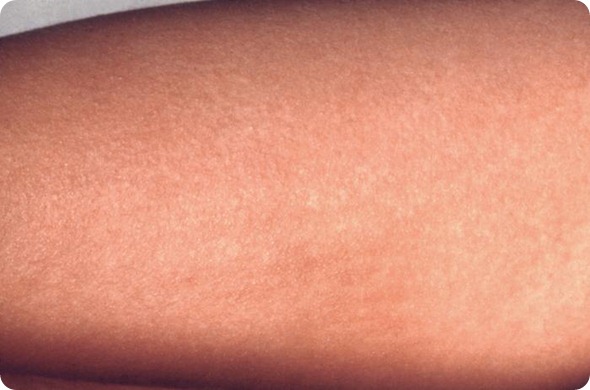Scarlet fever is caused by infection with bacteria - Group A beta haemolytic strain of Streptococcus pyogenes. The symptoms usually take one to four days to appear after acquisition of the infection. This is called the incubation period.
The infection is commonly acquired by breathing in tiny water droplets released due to coughing and sneezing by an infected person or child. The infection also spreads by touching a streptococcal skin infection or by sharing utensils, bed linen or towels and clothes with an infected person.
Overcrowded places like schools and day cares are common areas from where the infection may be acquired. A person is infectious even during his or her incubation period when the clinical symptoms have not appeared.
Symptoms of Scarlet fever include sore throat, rash and so forth. 1-6
Initial symptoms of Scarlet fever – sore throat, skin infection, fever
Symptoms of Scarlet fever often start with a sore throat, skin infection or fever. Streptococcal sore throat may turn into a case of Scarlet fever in around 10% of cases.
Skin infections with the bacterial strain are called impetigo. This may occur after injury, around open wounds or even after surgeries around the surgical incision.

This patient revealed a scarlet fever rash on the volar surface of the forearm due to group A Streptococcus bacteria. The scarlet fever rash first appears as tiny red bumps on the chest and abdomen that may spread all over the body. Looking like a sunburn, it feels like a rough piece of sandpaper, and lasts about 2-5 days. Image Credit: CDC
Scarlet fever rash
The rash appears 12 to 48 hours after the fever. The rash begins as red blotches. The turn into fine pink-red rash that may appear as sunburns and feel rough to touch.
The rash commonly affects and begins at the ears, neck, chest, elbows, inner thighs and groin and spreads to the rest of the body. The rash appears like a pin-point dark red spot on a general reddening of the skin. The rash turns white if a glass side is pressed over it.
The rash lasts for six days and then begins to fade from top of the body downwards. It takes around 7 to 10 days for the rash to disappear completely. It is commonly itchy. The rash may be only symptom in a milder form of Scarlet fever called scarlatina.
The rash does not affect the face commonly. However, the face appears red and flushed. The area around the mouth turns pale. This redness of the face gives the condition its name - Scarlet fever.
Scarlet fever and onset of fever
Onset of the illness is usually sudden with fever. There may be fever and headache in addition. The peaks of the fever are usually high. The rash follows 12-48 hours after the fever.
Other symptoms of Scarlet fever
Other symptoms of Scarlet fever include:
-
The neck lymph nodes may often be swollen and even be painful.
-
There is loss of appetite, nausea, vomiting and pain over the abdomen. Patient feels generally unwell. There may be severe muscle aches and pain.
-
Some patients may have red streaks in the folds of the body like groin and armpits that a couple of days after the rash have gone. This is caused due to broken blood vessels and these are termed pastia lines.
-
The tongue may be coated with a white layer initially. This then peels off and leaves the tongue red and swollen. This is a typical finding and is called strawberry tongue or raspberry tongue.
-
The throat appears red and blotchy, swollen and congested with a whitish layer over the tonsils.
-
After the rash has faded the layers of skin over palms and soles may peel off for around six weeks. It also affects the face, tips of the fingers, toes, axilla, groin and ears.
Further Reading